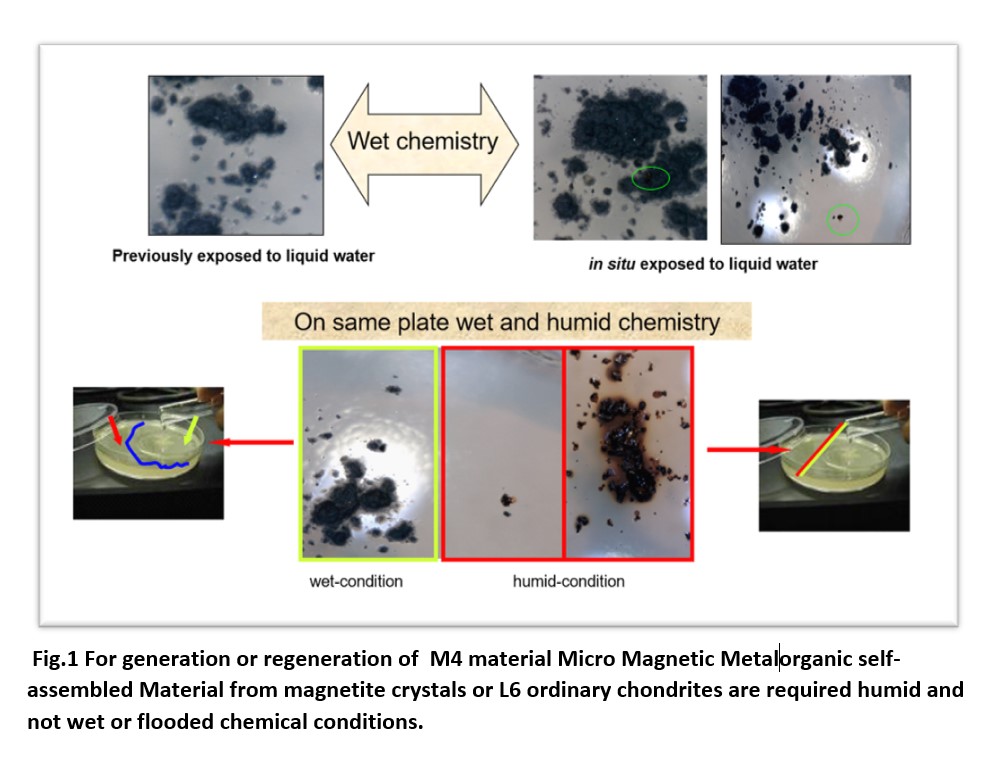From molecular simplicity to the emergent complexity of earliest life: investigating key features and the role of physicochemical periodic stress on Earth and on Earth-like planets.
- University of Naples Federico II, Dept. of Biology, edificio 7, campus Monte S. Angelo, Naples, Italy (rosanna.delgaudio@unina.it)
Abstract
What is life and how could it originate? This question lies at the heart of understanding the cell as the smallest living unit. Although we are witnessing a golden age of life sciences, we are ironically still far from giving a convincing answer to this question. With the aim to examines potential source of energy available to protocells on early Earth and/or elsewhere and mechanisms by which the energy could be used to drive polymer synthesis, experiments aimed at revealing the ability of meteorites and some terrestrial rocks to perform catalytic reactions operative in present-day life have been performed.
1. Indroduction
The aim of this work is to present and discuss results of recent and ongoing wet-lab experiments supporting Multiple Root Genesis Hypothesis (MuGeRo) already proposed elsewhere [1] seeking approaches surrounding the mysterious primeval steps of life emergence on Earth or on planets around distant stars beyond our Galaxy. This is an additional hypothesis to that microbial or early forms of life were already present in our solar system at the time of our Earth’s formation so that we can reconsider that panspermia and abiogenesis are not rival theories but complementary theories [2]. Life on Earth is carbon-based, uses water as solvent, and photosynthesis and chemosynthesis as way to obtain energy. Following a bottom-up approach, I utilized as a model for the emergence of earliest life on Earth, the self-organizing M4 material that I’m producing from L6 condrites and some terrestrial rocks and minerals (olivine and magnetite ) [3].
2. Figures

3. Summary and Conclusions
Searching for the very first instants of life on Earth, with several hypotheses in play [4], the challenge has been to replicate the conditions that could have allowed the emergence of early life to emerge. I developed a new approach to stimulate physicochemical processes that may have led to the emergence of the first life forms from inanimate matter on Earth or Earth-like planets via photo-metabolic pathways. My studies does not starts from ground zero, but provide evidence of non-enzymatic catalysis that modifies sugars, aminoacids, urea and other molecules produced in the prebiotic environments on the planets or satellites of our solar system by investigating the effect of physico-chemical stress on the formation of the metal-organic material M4 [3].
References
[1] del Gaudio, R.: Understanding the key requirement and the conditions that sparked life on Earth and beyond:clues and new knowledges supporting MuGeRo hypothesis., Europlanet Science Congress 2020, online, https://doi.org/10.5194/epsc2020-167, 2020.
[2] del Gaudio, R.: Transition from Non-living to living Matter: can integration of MuGeRo hypothesis and synthetic prebiotic biology laboratory approach shed light on the origin of Life? , Europlanet Science Congress 2021, online, 13–24 Sep 2021, EPSC2021-347, https://doi.org/10.5194/epsc2021-347, 2021.
[3] Geraci, G., D’Argenio, B., del Gaudio R. Patent US9328337 B2, granted, 2016.
[4] Bartlett, S. and Wong, L., Defining Lyfe in the Universe: From Three Privileged Functions to Four Pillars Life 2020, 10(4), 42; https://doi.org/10.3390/life10040042
How to cite: del Gaudio, R.: From molecular simplicity to the emergent complexity of earliest life: investigating key features and the role of physicochemical periodic stress on Earth and on Earth-like planets., Europlanet Science Congress 2022, Granada, Spain, 18–23 Sep 2022, EPSC2022-299, https://doi.org/10.5194/epsc2022-299, 2022.

